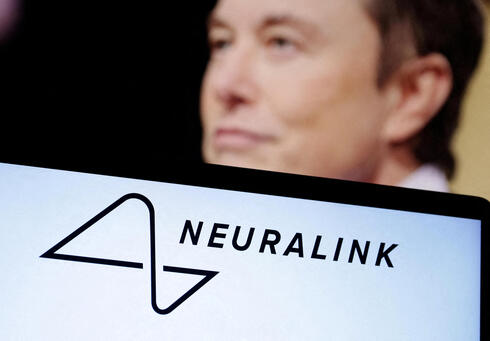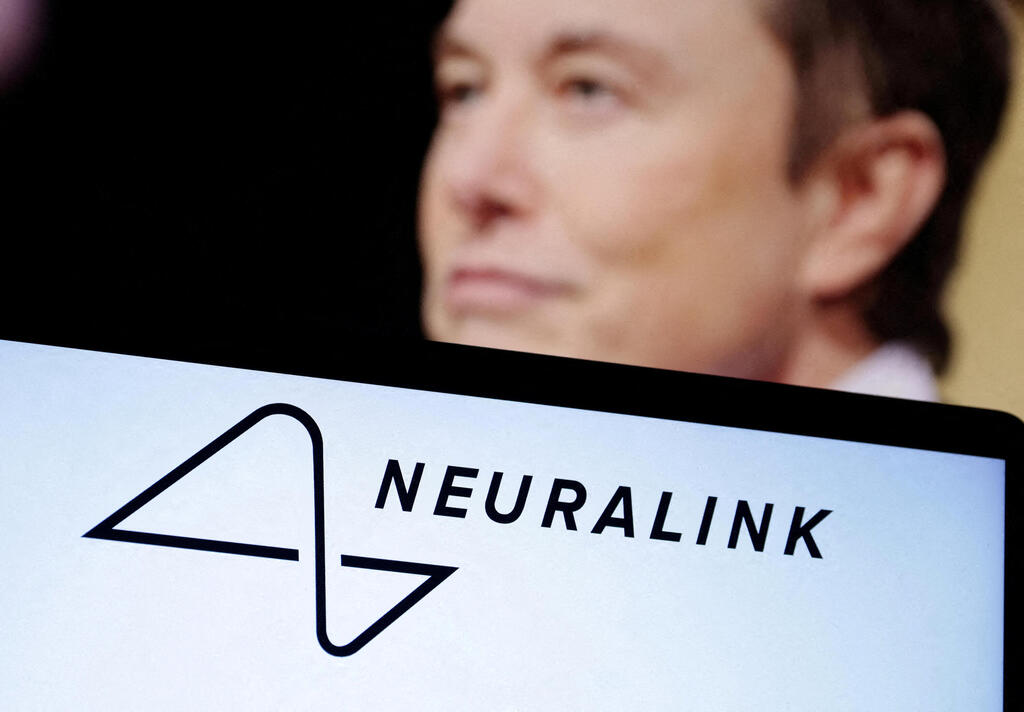
Mind games: Breaking down Neuralink
In 2017, when Musk founded his biotechnology startup, he presented his vision: to connect the brain to a cloud communication network in a way that would increase human cognitive abilities and maintain human superiority over computers. How close is Musk to realizing the vision, and where do his competitors stand?
The biotechnology company Neuralink installed the brain implant in its development for the first time in a human, according to the company's founder Elon Musk's announcement in X. The patient is "recovering well," he added, noting that the device is called "Telepathy." "Imagine if Stephen Hawking could communicate faster than a speed typist or auctioneer. That is the goal," he wrote.
Neuralink began recruiting patients for its first human clinical trial in September after receiving approval from the US Food and Drug Administration (FDA) to conduct the study. On the company's website, they are still looking to recruit more patients for the experiment. People with paralysis in all four limbs due to spinal cord injury or ALS will take part in the study. They are expected to attend meetings and treatments over a period of 18 months.
Neuralink was established relatively quietly in March 2017, and its purpose was presented at length by Musk in an interview he gave to the website Waitbutwhy in April of that year. There he explained that the company's vision is to develop a tool that will connect the millions of nerve cells in the brain to electrodes and a communication network in the cloud, with the aim of increasing cognitive abilities and thus maintaining human superiority over computers. Through those connections, people will also be able to communicate through thought alone without being in the same room - or what he called at the time "group telepathy."
Neuralink is trying to focus on other challenging tasks, although less futuristic, such as depression and brain injury. But the road there is also long, and according to estimates, many years of scientific progress are required until a commercial product is formulated that will fulfill some of the company's goals. Neuralink's current first-in-human study is expected to last six years.
More than a thousand electrodes on an implant the size of a coin
The field of brain-computer or brain-machine interface (BCI or BMI) is not new. Clinical trials have been conducted on humans for over two decades, and systems of this type have been installed in the heads of dozens of patients around the world, although none of the developed products are commercially available. These technologies allow people to operate wheelchairs and prostheses using the brain, decode wishes in the speech impaired, and increase hearing and vision in those with disabilities.
In these developments, work is being done to capture and decode electrical signals from the brain, to translate them into commands and by electronic means to be able to perform certain actions such as typing on a screen or moving a robotic hand. Today, the main effort is in building an array of flexible and thin electrodes as possible, which can be deployed on the head to receive the electrical signals produced by the neurons. The array that is in most use today is called "Utah," and the longest a patient has worn such an array is eight years.
Many developments emphasize that the same array will have as many electrodes as possible and at the same time, it will be as thin as possible - two almost contradictory but necessary goals so that the same product will serve the patient for a long time without the need to replace it, its layout will be almost non-invasive, and that at the end of the day, it will not damage the brain.
The Neuralink implant is the size of a coin. It records neural activity using 1,024 electrodes spread across 64 wires, each thinner than a human hair. After the implant has been placed in place by a robot, it will record and transmit signals to the brain via an app and wirelessly. Musk previously stated that the goal is to increase the number of electrodes a thousand times, and then a thousand times more, to fully read the brain. Last June, Neuralink was valued at $5 billion.
Alongside Neuralink, there are two other dominant private companies, both of which are in more advanced stages of development. The first is Synchron, which was founded about a year before Neuralink and in which the investment funds of Bill Gates and Jeff Bezos invest. An implant made by it has already enabled a handful of people with severe paralysis who took part in its clinical trial to send text messages, e-mail, and surf the Internet using only their thoughts.
The other company is Precision Neuroscience, founded by Neuralink co-founder Benjamin Rapoport in 2021. In June, it performed the first clinical study in humans, and in September, it purchased a factory designed for the commercial production of its flagship product - Layer 7 Cortical Interface, a product that, in the future, the company hopes, will help patients with severe neurodegenerative diseases to regain part of their communication ability.
Synchron's device is like a stent that is inserted into the jugular vein, and at Precision Neuroscience, they aim to place their array in such a tiny procedure that the patient will not need to shave their hair. Neuralink, on the other hand, is developing another procedure in which a sewing machine-like robot will insert it into the brain.
Allegations of animal abuse
The growing interest in the field and the series of developments in recent years is good news for many patients who need these innovations. Musk himself is part of the reason for this progress, but at the same time, his approach produces unrealistic timetables and expectations, sometimes while ignoring achievements that have already been recorded in the field. For example, in November 2022, when Musk announced that human trials would begin within six months (after already promising that this would happen at the end of 2020), he presented a video in which two monkeys with Neuralink implants move a computer marker using their brains - which has been shown to be possible in humans back in the early 2000s.
Musk's pressing schedules and aggressiveness have already brought on the company two separate investigations into how it treats animals, which also delayed FDA approval for human trials. Last November, a series of American lawmakers turned to the Securities and Exchange Commission (SEC) demanding to open a third investigation against the company after the contents of its veterinarian records were published in Wired.
According to the lawmakers, Musk's promise to investors that Neuralink develops safe products is misleading, and his statements should be investigated as a suspect of "investor fraud." The publication of the Wired story reveals that during the animal experiment stage, the company dangered the animals, caused by the medical procedures they developed as well as the implants themselves, which ultimately led to the need to euthanize many of the macaque monkeys that took part in the experiment.
For example, a few days after the installation of the implant, one female began to press her head on the floor for no reason, to pull on the implant until it bled, and on most days to simply lie on the edge of the cage, holding hands with her cagemate monkey. At a certain point, she began to lose coordination, shake uncontrollably at the sight of laboratory workers, and her health deteriorated until they finally had to put her to sleep. An autopsy revealed that she had a brain hemorrhage, and that the Neuralink implant had left part of the cerebral cortex "worn out." Against the background of the revelations, Musk claimed that the monkeys were "terminal" anyway, a claim that is also controversial.














